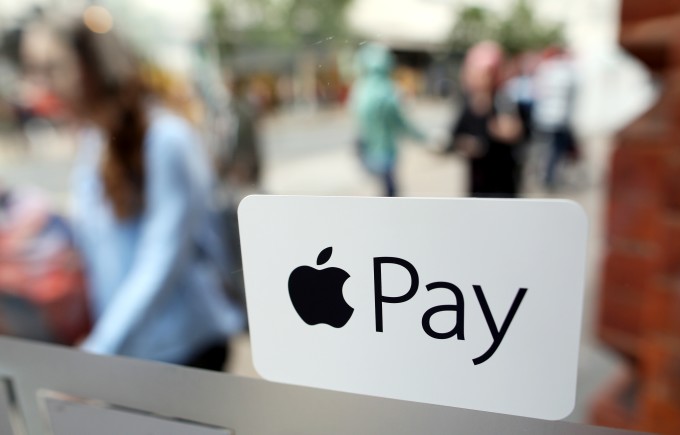Goldman-Apple credit card will yield game-changing consumer data

There has been considerable industry chatter and analysis since news broke that Apple and Goldman Sachs are teaming up to issue a credit card on the Mastercard network.
A lot of thinking has centered on Apple Pay, mobile payments and how this card can stimulate Apple Pay volume and address Apple’s revenue decline given slowing iPhone sales. There is also some industry speculation that Apple will receive a significant portion of the card interchange.
We have a different point of view on this subject. We think the Goldman Sachs Apple Mastercard co-branded credit card is less about mobile payments and Apple Pay and more about consumer credit and lending. Goldman has been steadily building a consumer banking business, Marcus (online lending, online savings) and has been working for some time on a credit card product.
 Bloomberg News
Bloomberg NewsIn many ways this is an obvious expansion of Goldman’s consumer banking roadmap. Credit cards continue to be the most profitable banking product, with pretax ROAs of 4%-plus, and Marcus has about $30 billion in U.S. deposits that need to be deployed in high-yield assets. Additionally, recall that Goldman hired a senior card executive from Discover in 2015 to build out its digital finance and consumer banking business.
Rather than go it alone, Goldman is executing on a smart strategy by teaming with Apple. In fact, Apple represents a coup of sorts for Goldman given the scarcity of large national brands that can partner on a credit card program — many will remember the Amex and Citi fight over Costco.
In working with Apple, Goldman is leveraging Apple’s brand, its affinity with affluent and millennial consumers, and its distribution and reach: 230-plus U.S. retail stores, various digital properties and 100-million-plus consumers in the U.S. using Apple products and services. (Credit Suisse estimates that Apple has 588 million users worldwide.) The Apple wallet integration and the associated spending/budgetary controls are nice value-add features.
We think there will be some interesting personalization and security features that Goldman will bring to the offering through the capabilities of Clarity Money and Final that were acquired in 2018.
Beyond that, the Apple Pay provisioning and use should be no different than any other card — we assume that Apple Pay as a wallet is card and issuer agnostic but recognize that there will be some incremental benefits for using the Goldman Sachs Apple co-branded card within the Apple ecosystem. Apple certainly has the ability to create some innovative and useful features within the card and/or the card-wallet combination just as it has done with the iPhone, Watch, Mac and iPad. Identity authentication, artificial intelligence and voice support are three that come to mind.
So what’s in it for Apple? Much has been made about how this card will revitalize Apple Pay and provide an improved interchange driven revenue stream higher than the 15 basis points that Apple currently gets from issuers. Given that cardholders are expected to get back 2 percent of spending in rewards, we do not think the interchange economics allow for much sharing with Apple.
However given the construct of large strategic co-brand credit card partnerships, this credit card program can be lucrative for Apple and create a brand new revenue stream based on the overall size, growth and performance of the portfolio. For context, Delta makes about $3 billion on the Delta Amex co-branded credit card.
Beyond the financial returns, we think the real value for Apple is in the underlying consumer and spending data — Apple already has a tremendous amount of consumer data via its phones and will gain the ability to pair that with consumer spending. That will deepen its role and influence within both physical and digital commerce, including content and entertainment.
This information could be monetized in several ways and puts Apple in a unique place relative to its Big Tech peers. For example, there is the obvious advertising angle, or a more comprehensive integration with its other services, or perhaps a data privacy partnership.
At a more basic level, Apple will garner some additional sales of its products and services, save on interchange costs when this card is used to buy Apple products and services, and accentuate its brand and appeal. We are unclear what this card means for the Barclaycard Visa with Apple Rewards, although that is positioned more as an Apple product financing tool.
We believe that this card has the potential to provide a unique customer experience and will be well supported by both Goldman and Apple to drive cardholder acquisition and engagement. Demand for consumer credit remains high, with revolving credit balances climbing $155.5 billion in the last four years. There have been over 10 new venture capital- backed startup credit card programs launched over the last three years, and this will be the first new bank-issued program and the most well-funded.
While each new program represents new competition and takes away some share from existing issuers, we think this program in particular will be market disruptive given Goldman’s deep pockets and long-term bet on the consumer finance business complemented by Apple’s product wizardry. The large credit card issuers will manage by adjusting their high-value rewards offerings, but we think regional and community banks are vulnerable and will see volume erosion. They need to up their game.

